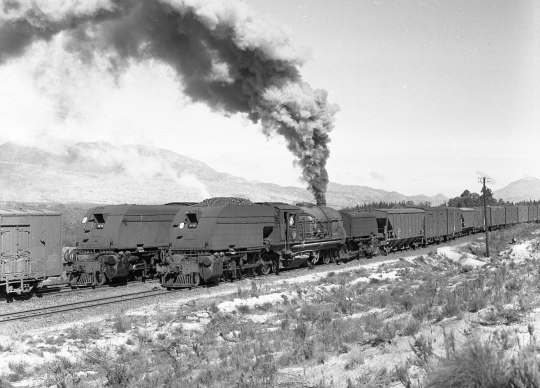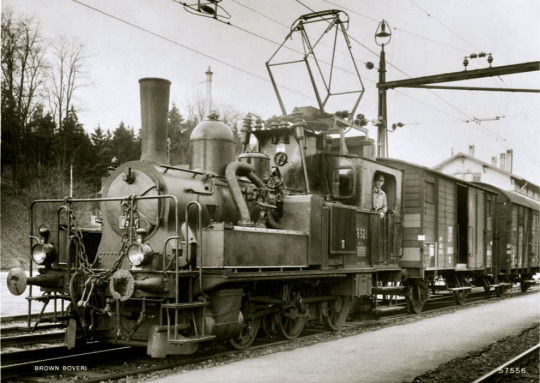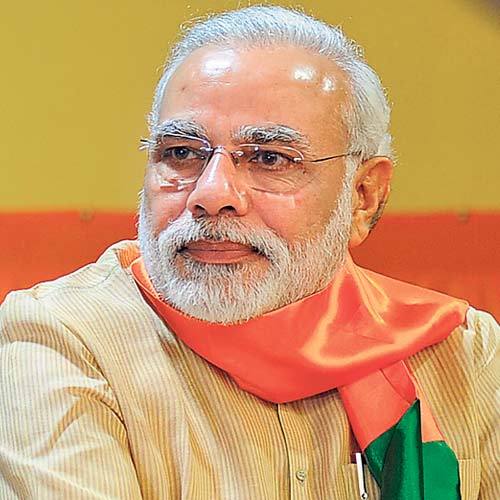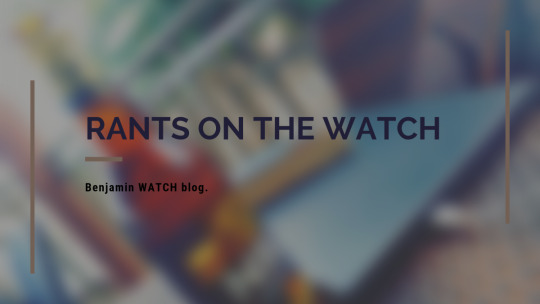#The South African Union
Text

#yemen#jerusalem#tel aviv#current events#palestine#free palestine#gaza#free gaza#news on gaza#palestine news#news update#war news#war on gaza#algeria#south africa#african union
527 notes
·
View notes
Text
Yesterday, here on tumblr, someone reached out to me, seeking help. And now I am here seeking yours. I don't care about your opinions and views. The matter of the fact is that everyone deserves to be treated as human beings, and they deserve the rights of human beings as we all do.
Right now, we have a violation of the LGBTQ+ community in Uganda after its government passed one of the harshest anti-gay laws, which includes punishment by death.
Here are two Al Jazeera articles on this:
1. Displaced twice: Gay Ugandans on the run face upheaval in Kenya
2. Ugandas anti lgbtq law causing wave of rights abuses activists say
Yesterday, @annoyingpaintertragedy (please take a look at their blog) reached out to me regarding this. They mentioned that many of Ugandas lgbtq civilians were forced to flee Uganda to neighboring Kenya. But situations are just as bad in Kenya. They spoke of the Kakuma refugee camps where they now live along with many other refugees.
I myself am just now learning of this. But if you have any information or links of organizations that may help regarding this situation, please send them to me or add them to the reblogs.
#uganda#homophobia#lgbtq#gay rights#lgbtq rights#same sex relationships#human rights#social justice#refugees#kakuma refugee camp#unhcr#united nations#kenya#african union#african nations#africa#south africa#important#signal boost#boost#lgbtqia
112 notes
·
View notes
Text






the physicality of test matches (most of these were from the first 40 minutes)
[240713] RSAvIRE @ Durban, South Africa [X]
#Rugby Union#irish rugby#south african rugby#springboks#andrew porter#eben etzebeth#joe mccarthy#jack crowley#franco mostert#tw blood#tw violence#RSAvIRE#rugby#rugbyunion#i made these#ruggers gifs#springbokke#sports
22 notes
·
View notes
Note
whats the weirdest train you know?
Oh there are so e really fucking weird ones a lot of weird ones were very niche and were designed for something very specific but some were actually rather popular like the better garratt which were very popular in South Africa but weren't that common anywhere else although some were used in Australia and because South Africa only ceased Steam Traction in 1991 many of the Locomotives were sold off and sent overseas mainly to the UK, New Zealand, and Australia





But that's just the better garratt which weren't that weird and about 1200 were built from about 1908 to 1968 to about 100 different designs
The next few Locomotives were much less common starting with an Ancestor of the Garratt; The Double Fairlie

These were an type of strange Double ended Locomotive in the 1860s but really only the Ffestiniog & Welsh Highland Railway used them and they still have a few like the one above (they also purchased a few Garratts from South Africa seen above)
Next on to the Steam turbines which were largely experimental and never really panned out but several different designs were built mostly one-offs



Most of them didn't work very well
Next is a retrofit of an regular steam Locomotive to be able to use a different fuel source during a coal shortage that being the Bizarre Swiss Steam-Electric Locomotive

Switzerland has almost no Coal and thus during world war 2 had no coal but they did have cheap Hydroelectricity and their railways were mostly Electrified so they just made the abombonations
#steam locomotive#trainposting#electric traction#steam boiler#south African Railways#beyer garratt#Swiss railways#sbb#welsh highland railway#pennsylvania railroad#union pacific
32 notes
·
View notes
Text



#youtube#youtube community#youtube comments#youtube channel#social justice#current events#human rights#ussr#soviet union#history#history posting#history tumblr#history side of tumblr#history lover#important#important to know#political#political posting#politics#anti colonialism#anti capitalism#anti imperialism#anti colonization#south africa#africa#african#recent history#decolonization#anti facist#antifascist
5 notes
·
View notes
Text

Up in this miserable corner of Europe, we're desperately trying to get our country to back South Africa's submission but our leaders are either being heavily blackmailed or are Zionists themselves, they won't fucking listen to us despite the fact Ireland has made up 4% of all global demonstrations even tho we're about 1% of the global population. Ireland wants to help, we are being stomped on, but we will keep trying.
#free gaza#free palestine#gaza strip#irish solidarity with palestine#palestine#gaza#news on gaza#al jazeera#boycott israel#israel#Osama Hamdan#The Arab League#Organisation of Islamic Cooperation#African Union#South Africa#International Court of Justice#ICJ#Genocide
16 notes
·
View notes
Text


Brazilian President Luiz Inacio Lula da Silva meeting South African President Cyril Ramaphosa at the 37th African Union summit in Addis Ababa, Ethiopia, today, 17 February 2024
Credit: Ricardo Stuckert
#Luiz Inacio Lula da Silva#Lula da Silva#Lula#Brazil#Brasil#Cyril Ramaphosa#South Africa#African Union#African Union summit#Addis Ababa#Ethiopia#Africa
2 notes
·
View notes
Photo

https://www.southernliving.com/
📷:Peter Frank Edwards
First Union African Baptist Church, founded in 1881. With more visitors discovering Daufuskie Island each year, the Lowcountry gem is focused on both sharing and protecting its unspoiled beaches, mystical marshlands, and rich Gullah culture.
2 notes
·
View notes
Text
EAC Heads Of State Rally Behind ‘Eastern Africa-Made’ Raila For AU Post
#EAC Heads of State rally behind @RailaOdinga for #AUC chair. Kenya's President @WilliamsRuto endorses Odinga's candidature, citing his strong faith in #Africa's possibilities & commitment to transformation. #RailaForAUC
Continue reading EAC Heads Of State Rally Behind ‘Eastern Africa-Made’ Raila For AU Post
#African Union (AU)#African Union Commission (AUC)#African Union Commission chairman#Burundi#Chairperson#East African Community (EAC)#Kenya#Olusegun Obasanjo#Raila Odinga#Rwanda#South Sudan#Tanzania#Uganda
0 notes
Text
Cuito Cuavanale, like Fada, was another of the forgotten decisive battles of history:
Cuito Cuavanale, unlike other decisive battles, was not marked by an exercise in true military brilliance by one or the other side, nor by some kind of decisive triumph for one or another side, tactically. It also points out that the decisive battles do not need tactical brilliance to be decisive. The political result of the battle was the collapse of South Africa's bid to sustain white supremacy in Africa, the withdrawal of South African troops from Angola and Mozambique and Namibia, where African militias kept their guns and started fighting each other to determine the fate of the post-South African new states.
It is also a signal Cold War irony that one of the decisive events of 20th Century Black history was fought between a white army of Africanized Dutchmen and Cubans who were also, as per typical with the Castro regime, decidedly whitened compared to Batista-era Cuba.
#lightdancer comments on history#black history month#african history#american history#cuban history#soviet history#soviet union#south african border war#battle of cuito cuavanale
0 notes
Text
was trying to start a flag collection with all yhe coutntries from ww2 in the allies/commintern and the current japanese flag because it was only $2 and god DAMNIT do I appreciate a good deal however it is increasingly awkward as each nation seems to be doing everything they can to make owning their flags a horrible idea
#me watching as the USA does. well typical USA stuff actually.#and the Russian Federation uses USSR flags in Ukraine#and the U.K. . well actually it's still typical UK stuff#even Poland abstained from the ceasefire vote >:(#like god DAMNIT i can IGNORE historical crimes but CAN'T YOU ALL STOP DOING BAD THINGS IN THE MODERN ERA FOR 30 SECONDS???#EVEN ETHIOPIA IS MASSACRING THE TIGRAY !!! I LITERALLY HAVE NO SAFE NATIONS HERE#At this point the collection is gonna be like. Mongolia - Liberia - Cuba#sigh#still not taking down my “THE UNITED NATIONS FIGHT FOR FREEDOM” poster because seeing the USA and USSR flags flying together#against the nazis is objectively badass and you can't take it from me#I also love the subtlye detail that on the poster - the Ethiopian flag is covering up the South African Union flag#whoever did that I'm gonna kiss you
0 notes
Text
India's G20 Leadership Ushers in a New Era of Inclusive and Action-Oriented Multilateralism
Today marks 365 days since India assumed the G20 Presidency. It is a moment to reflect, recommit, and rejuvenate the spirit of ‘Vasudhaiva Kutumbakam, ‘One Earth, One Family, One Future.’
As we undertook this responsibility last year, the global landscape grappled with multifaceted challenges: recovery from the COVID-19 pandemic, looming climate threats, financial instability, and debt distress…

View On WordPress
#African Union (AU)#Digital Public Infrastructure (DPI)#G20#GDP#Global Biofuels Alliance#Global South Summit#India#Nationally Determined Contributions (NDCs)#New Delhi Leaders&039; Declaration (NDLD)#Vasudhaiva Kutumbakam
0 notes
Text
Ask an older generation of white South Africans when they first felt the bite of anti-apartheid sanctions, and some point to the moment in 1968 when their prime minister, BJ Vorster, banned a tour by the England cricket team because it included a mixed-race player, Basil D’Oliveira.
After that, South Africa was excluded from international cricket until Nelson Mandela walked free from prison 22 years later. The D’Oliveira affair, as it became known, proved a watershed in drumming up popular support for the sporting boycott that eventually saw the country excluded from most international competition including rugby, the great passion of the white Afrikaners who were the base of the ruling Nationalist party and who bitterly resented being cast out.
For others, the moment of reckoning came years later, in 1985 when foreign banks called in South Africa’s loans. It was a clear sign that the country’s economy was going to pay an ever higher price for apartheid.
Neither of those events was decisive in bringing down South Africa’s regime. Far more credit lies with the black schoolchildren who took to the streets of Soweto in 1976 and kicked off years of unrest and civil disobedience that made the country increasingly ungovernable until changing global politics, and the collapse of communism, played its part.
But the rise of the popular anti-apartheid boycott over nearly 30 years made its mark on South Africans who were increasingly confronted by a repudiation of their system. Ordinary Europeans pressured supermarkets to stop selling South African products. British students forced Barclays Bank to pull out of the apartheid state. The refusal of a Dublin shop worker to ring up a Cape grapefruit led to a strike and then a total ban on South African imports by the Irish government.
By the mid-1980s, one in four Britons said they were boycotting South African goods – a testament to the reach of the anti-apartheid campaign. . . . The musicians union blocked South African artists from playing on the BBC, and the cultural boycott saw most performers refusing to play in the apartheid state, although some, including Elton John and Queen, infamously put on concerts at Sun City in the Bophuthatswana homeland.
The US didn’t have the same sporting or cultural ties, and imported far fewer South African products, but the mobilisation against apartheid in universities, churches and through local coalitions in the 1980s was instrumental in forcing the hand of American politicians and big business in favour of financial sanctions and divestment.
By the time President FW de Klerk was ready to release Mandela and negotiate an end to apartheid, a big selling point for part of the white population was an end to boycotts and isolation.
Twenty-seven years after the end of white rule, some see the boycott campaign against South Africa as a guide to mobilising popular support against what is increasingly condemned as Israel’s own brand of apartheid.
. . . continues at the guardian (21 May, 2021)
#israel#palestine#gaza#south africa#i think all of us need to seriously study the history and actions of the anti-apartheid movement#and apply these lessons to the israeli occupation
3K notes
·
View notes
Text
Rants on the Watch 4
If you have contacts in Nigeria you must most likely think Peter Obi is going to win the election this weekend. The youth think he is their man because he is in his early 60s and the youngest out of the 18 presidential candidates of which only 1 is female in Africa’s most populous country. If we are to go by the regional theory in the sense of Nigeria we can’t have anyone getting 50%+1 in the…

View On WordPress
#African Union#AU Summits#Brazil#China#Debt#economy#Iron roof sheets#Karamoja#Nigeria#Nigerian Election#Nuclear power#Russia#South Africa#Uganda#Ukraine#Valley dams#war
0 notes
Text
In my local cafe run by a no nonsense grandma I met a man who said don't vote it doesn't do anything.
He was a white retired, divorced man with an adult son and daughter.
I was about to protest what he said.
But he continued 'do you think the suffragettes got women's rights by voting, do you think black south Africans ended apartheid by voting, do you think black Americans ended segregation by voting'
Turns out he was a former trade union worker and took part in Britain's largest anti-war protest.
He spoke passionately about the people of Gaza and comment on how everyone needs to continue with protests and boycotts.
It was actually quite refreshing as social media really has demoralised me as a lot of people don't seem to care.
Any way, free gaza until gaza is free and then punish Israel
🍉🍉🍉🍉🍉
3K notes
·
View notes
Text
On June 19, 1865, Union troops arrived in Galveston, Texas, and Major General Gordon Granger announced the end of the Civil War and that the enslaved people in the town were free. This was the last area in the South to receive the orders that slavery was abolished, and this announcement came over 2.5 years after President Abraham Lincoln issued the Emancipation Proclamation. What has become known as Juneteenth is now a federal holiday since 2021 and it is a symbolic date representing the African American struggle for freedom and equality in the United States and is also a celebration of family and community.
You might ask, what is important about Juneteenth to California history? Slavery was a major topic discussed at the California Constitutional Convention in September 1849. While California did enter the Union on September 9, 1850 as a “free state” as part of Congress’ Compromise of 1850, slavery did exist in California and there were certainly protections under the law that were not awarded to all people. Many enslaved people were brought to California during the Gold Rush.
Early Black civil rights leaders in Sacramento in the 1850s, such as Daniel Blue, Jeremiah B. Sanderson, William Yates, Charles Hackett, and Joseph Smallwood confronted political challenges and sought further representation in California in a time when a Person of Color could not testify against a white person in court. Early California newspapers were full of accounts of enslaved people paying for their freedom, testimonies by anti-slavery and civil rights activists, and stories covering plaintiffs suing for freedom. Elements of slavery continued in California through the Civil War.
The Emancipation Proclamation, General Granger’s announcement, and the 13th, 14th, and 15th Amendments to the U.S. Constitution after the Civil War did not solve issues of freedom and equality. The struggle of civil rights continued through the 20th Century and the extension of those rights to all people continues to this day.
For today, Jared letterpress printed “JUNETEENTH” in 30 line pica wood type. The typeface is French Clarendon and the type was made by the Hamilton Wood Type Company in the late 1880s. This was printed with yellow, red, and green ink using our Washington hand press, which was made in 1852.
#juneteenth#museum#sacramento#history#letterpress#printing#art#asmr#printmaking#old sacramento#oddly satisfying
616 notes
·
View notes